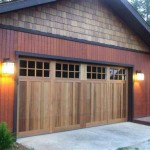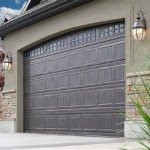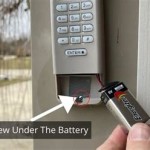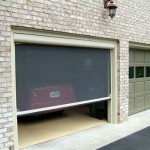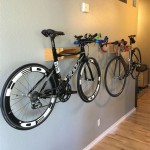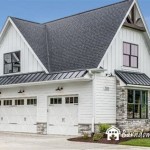Can You Put A Dryer Vent In The Garage Floor? A Comprehensive Guide
The question of whether a dryer vent can be routed through a garage floor is a complex one, involving considerations of safety, building codes, efficiency, and practicality. While it might seem like a convenient solution to placement challenges, running a dryer vent beneath a concrete slab presents significant hurdles. This article explores these challenges in detail, examining the potential risks and offering alternative solutions for dryer vent installation.
Dryer vents are crucial components of a laundry system, responsible for expelling hot, moist air and lint generated during the drying process. Improper venting can lead to a variety of problems, including reduced drying efficiency, increased energy consumption, the growth of mold and mildew, and, most seriously, the risk of carbon monoxide poisoning from improperly vented gas dryers. Therefore, understanding the requirements and limitations surrounding dryer vent installation is paramount for home safety and functionality.
The primary function of a dryer vent is to direct exhaust outside the building. Ideally, the vent should follow the shortest, straightest path possible to minimize resistance and maximize airflow. Bends, turns, and long runs all contribute to increased friction, which impedes the exhaust flow. When the vent is obstructed, lint accumulates more rapidly, leading to clogs and potential fire hazards. These issues are significantly exacerbated by routing the vent beneath a garage floor.
Obstacles and Risks of Sub-Floor Dryer Venting
Installing a dryer vent under a garage floor introduces several substantial obstacles and risks. These challenges stem from the inherent properties of concrete floors, the nature of dryer exhaust, and the accessibility limitations for maintenance and repairs.
One of the most significant concerns is the difficulty of inspection and maintenance. Once encased in concrete, the vent becomes virtually inaccessible without significant demolition. Lint buildup is inevitable in any dryer vent system, and regular cleaning is essential to prevent clogs and reduce fire risks. With a sub-floor vent, this crucial maintenance task becomes extremely challenging, potentially requiring the breaking of the concrete slab. This not only involves considerable expense but also disrupts the integrity of the garage floor.
Another key consideration is the potential for moisture accumulation. Dryer exhaust contains a significant amount of water vapor. When this vapor cools within the vent, it can condense, forming liquid water. If the vent lacks proper drainage, this water can pool, creating a breeding ground for mold and mildew. Furthermore, standing water can corrode the vent material, leading to leaks and further compromising the system’s integrity. Since the vent is encased in concrete, these problems can go undetected for extended periods, potentially causing structural damage to the garage floor.
Furthermore, the material selection for a sub-floor dryer vent is critical. Flexible vinyl or foil ducts, which are sometimes used in short runs behind dryers, are generally unsuitable for installation within concrete. These materials are easily crushed or damaged, and they are not resistant to moisture and corrosion. Rigid metal ductwork is a more durable option, but even this requires careful installation and protection to prevent deterioration. Moreover, any joints or seams in the ductwork must be meticulously sealed to prevent leaks, and maintaining these seals over time within a concrete slab is extremely difficult.
The design of the vent system must also account for proper slope and drainage. Ideally, the vent should slope downward towards the exterior of the building, allowing any condensed moisture to drain out. This requires careful planning and execution during the installation process. If the slope is insufficient or non-existent, water will accumulate within the vent, exacerbating the problems described above. Furthermore, the point of exit for the vent must be carefully located to ensure adequate airflow and prevent the re-entry of exhaust into the building.
Building codes often address dryer vent installations, and many jurisdictions may have specific regulations prohibiting or restricting sub-floor venting. These regulations are typically in place to ensure safety and prevent fire hazards. It is crucial to consult local building codes and obtain the necessary permits before undertaking any dryer vent installation project. Failure to comply with these regulations can result in fines, legal liabilities, and potentially dangerous conditions.
Alternative Solutions for Dryer Venting
Given the challenges associated with sub-floor dryer venting, exploring alternative solutions is essential. Several options can provide safe and efficient dryer venting without the risks and complications of burying the ductwork under the garage floor.
One common solution is to vent the dryer directly through an exterior wall. This approach involves running the vent duct horizontally to the nearest exterior wall and installing a vent cap to direct the exhaust outside. This method is generally straightforward and relatively inexpensive, but it may not be feasible if the dryer is located far from an exterior wall. Additionally, the placement of the vent cap must be carefully considered to avoid proximity to windows, doors, or air intake vents.
Another option is to run the vent through the ceiling and roof. This approach involves routing the vent duct vertically through the ceiling and out through the roof. This method can be particularly useful if the dryer is located in the center of the house or if there are obstructions preventing direct venting through the wall. However, venting through the roof requires careful flashing and sealing to prevent leaks. It also necessitates the use of insulated ductwork to prevent condensation within the vent.
A third alternative is to use a dryer vent booster fan. These fans are designed to increase airflow in long or complex vent runs. They can be particularly helpful if the dryer is located far from the exterior vent or if the vent has numerous bends and turns. However, booster fans require electrical wiring, and they must be installed in accordance with local electrical codes. Furthermore, they add an additional point of failure to the system, so regular maintenance and inspection are essential.
Ventless dryers offer a different approach altogether. These dryers do not require external venting to exhaust moist air. Instead, they use condensation or heat pump technology to remove moisture from the clothes. While ventless dryers are generally more expensive than traditional vented dryers, they can be a viable option in situations where external venting is impractical or impossible. They also offer increased energy efficiency and reduced moisture levels in the laundry room.
Key Considerations for Safe and Efficient Dryer Venting
Regardless of the chosen venting method, several key considerations are essential for ensuring safe and efficient dryer operation. Adhering to these practices minimizes the risk of fire, reduces energy consumption, and extends the lifespan of the dryer.
First and foremost, the vent duct should be constructed of rigid metal, ideally galvanized steel or aluminum. Flexible ducts, whether vinyl or foil, should be avoided except for very short transition pieces directly behind the dryer. These materials are easily damaged and prone to lint accumulation, increasing the risk of fire. Rigid metal ductwork provides a smoother interior surface, reducing friction and facilitating airflow.
The length of the vent run should be minimized. Longer vent runs increase resistance and reduce drying efficiency. Building codes typically specify maximum vent lengths, taking into account the number of bends and turns. Bends reduce airflow and increase the likelihood of lint accumulation. For each 90-degree bend, the effective length of the vent should be increased by a specified amount, typically 5 to 10 feet.
Regular cleaning of the dryer vent is essential. Lint accumulation is inevitable, and regular cleaning is necessary to prevent clogs and reduce the risk of fire. The vent should be inspected and cleaned at least once a year, and more frequently if the dryer is used heavily. Cleaning can be accomplished using a specialized dryer vent cleaning brush or by hiring a professional dryer vent cleaning service.
The exterior vent cap should be designed to prevent the entry of birds, rodents, and insects. These pests can build nests within the vent, obstructing airflow and creating a fire hazard. The vent cap should also be designed to prevent the re-entry of exhaust into the building. This is particularly important if the vent is located near windows, doors, or air intake vents.
Finally, always consult with a qualified professional before undertaking any dryer vent installation or modification project. A professional can assess the specific situation, recommend the most appropriate venting solution, and ensure that the installation complies with all applicable building codes and safety regulations. This can help prevent costly mistakes and ensure the safe and efficient operation of the dryer.

Can You Vent A Dryer Into The Garage

Dryer Vented Into Garage Inspecting Hvac Systems Internachi Forum

Is It Safe To Install A Tumble Dryer In Garage Or Shed

Learn How To Reroute Dryer Vent From Garage Outside

Learn How To Reroute Dryer Vent From Garage Outside

How To Install A Dryer Vent The Home Depot

Dryer Vent Installation And Upgrades Diy
Can An Electric Dryer Be Vented Into A Garage Quora

Laundry Room Phase 2 How To Run A Vent Pipe Through Shelf House Of Hepworths
The Exhaust Of My Dryer Vents To Crawl Space House Is That Correct Should I Change It Or Leave As Appaly Has Always Been Like
Related Posts

